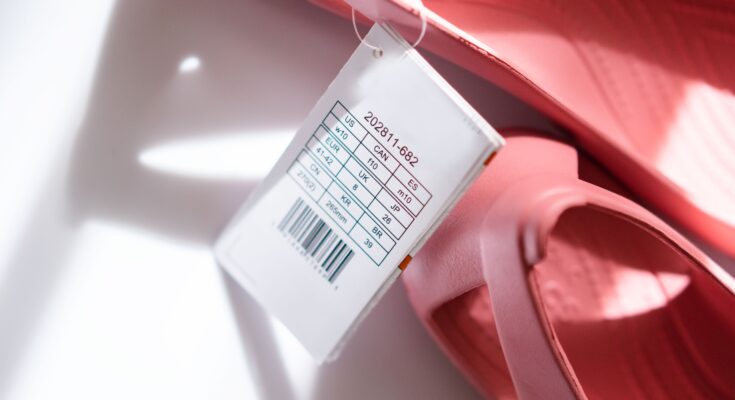Barcodes are unique among other forms of identification in that they don’t require human interaction to read them, making them ideal for mobile and remote usage. Plus, barcodes are relatively easy to generate and use – helping streamline your inventory management process.Titan Barcode
To maximize the potential of barcode technology, you need a software system that can link barcodes to products and their details. This could be achieved through an ERP system, barcode scanner or both combined.
Selecting the ideal labeling solution for your business requires carefully weighing upfront costs against long-term benefits. Even expensive labels won’t save you money in the long run if they don’t function properly or cannot be scanned. Furthermore, make sure the labeling solution has features tailored specifically towards meeting your unique requirements.
Convenience for store associates
When a store associate scans a barcode label, it instantly updates information in their company’s inventory and sales systems. This is especially beneficial for retail outlets with frequent price adjustments.
Store associates can save time by not having to manually enter product data such as prices, quantities and item codes. This makes it much faster for them to complete checkouts and process returns or exchanges.
Barcode labels on price tags also help store managers save employee training time, allowing new hires to get up and running more quickly after onboarding.Titanbarcodelabels.com
Barcodes are composed of vertical black lines, spaces and numbers that uniquely identify products and their associated information. Scanners connected to computers read these codes and use the data contained within them to retrieve relevant details about an item being scanned.
Easy inventory management
No matter the size of your business or enterprise, price tag barcode labels offer inventory management at an affordable cost that can make a major impact on operations. They’re an inexpensive and user-friendly method for tracking products, creating sales orders and fulfilling packing lists with ease.
They’re also incredibly user-friendly for new employees to learn and utilize. Unlike traditional inventory systems, which require memorization, these systems don’t take long for new staff members to become productive at the checkout counter.silver barcode labels jeddah
These tags are highly accurate, enabling you to monitor inventory levels in real-time. This reduces the need for manual counts and helps avoid stock-outs or other issues.
To get started with this technology, you’ll need a reliable scanner and printer. These devices can be purchased for under $100 in both wired and wireless versions.
Convenience for customers
Barcode labels, which feature black and white lines with a number underneath, contain scannable information that can be read. They’re widely used by businesses of all sizes to keep track of inventory, shipments and assets.
Labels are an essential element of any retail shop’s operation, particularly when it comes to supporting fluid pricing strategies that alter frequently. They help keep customers informed about sales and markdowns, encouraging them to return for more.
They’re an excellent way to showcase products and services. This can result in increased sales as well as more website traffic.
Barcode labels are cost-effective to produce and come in a wide range of finishes and materials. Not only are they customizable, but it can save you money in the long run by decreasing overstocking or other inventory expenses.
Barcode labels, also known as printed barcodes, offer a convenient way to monitor inventory and equipment throughout your organization. Not only do they improve supply chain efficiency and reduce overhead expenses, but their accuracy increases due to eliminating human error from the equation.
No matter your industry – manufacturing, healthcare or logistics – using durable barcode labels is an advantageous practice.
They are constructed with materials that prevent electrostatic discharge during application, reduce charge accumulation on the label surface, and withstand harsh industrial conditions.
Size
Barcode labels printed on products and other items provide a convenient means of tracking and data collection. They’re often employed by logistics firms and government organizations for various uses.
These labels typically range in size from 0.10” to 1.46” x 0.02” and can have an x-dimension of up to 600dpi. Typically, these labels are applied on metals and other durable materials for product and equipment identification purposes.
PDF417 labels can store over 1.1 kilobits of data, making them ideal for encoding photos, fingerprints and signatures. They’re widely used in healthcare and government institutions due to their self-checking and error correction capabilities.
QR codes are one of the most popular types of 2D barcodes, offering more information than their PDF417 label counterpart. These labels can be used to uniquely identify objects such as mobile phones and tablets with ease – they can even be read with a smartphone camera! They’re often employed in marketing and advertising campaigns.
Color
Barcode labels are essential in the manufacturing and supply chain industries for identifying and tracking products. Furthermore, they help prevent recalls if there are issues with a given item.
Color label printing is a popular choice for barcodes as it makes them easier to scan with scanners, who require strong contrast between light and dark bars.
Some labels also feature features like a serial number that can be used to monitor product lifecycle or barcodes that consumers can scan and enter raffles or sweepstakes contests.
Durable barcode labels are ideal for applications requiring them to withstand harsh operating conditions or frequent cleaning with harsh caustics. They come in a range of materials, such as waterproof and UV-resistant options.
No matter if you require single-piece or roll labels, we have the ideal solution for your specific application. Our inventory includes an extensive range of materials and printers suitable for any labeling need.
Text
Barcode labels must be legible and easy to comprehend, especially if workers must manually input the code numbers.
Barcodes are an invaluable tool for product identification, helping your customers and suppliers locate what they need quickly. Furthermore, barcodes enable tracking and tracing of items.
These labels can be printed on inkjet or laser printers and used for labeling packages, inventory tags, security tags, shipping labels and more. With good resolution they come in a range of colors.
How to Utilize Printed Barcodes:
The initial step in using printed barcodes is selecting the symbology. Selecting the right symbology for your application is essential as it determines how your labels will be read by scanners. Take into account customer requirements, infrastructure capabilities (scanner type and data to be encoded), as well as other factors when making this decision.
Printing
Barcode labels help businesses efficiently manage inventory and assets. They save employees time by eliminating the need to manually enter data, while increasing accountability by monitoring employee use of stock and assets.
Companies need a printer with barcode printing technology and the appropriate label paper or synthetic material for their requirements. While there are various types of barcode labels, thermal transfer and direct thermal are by far the most popular options.
Both methods rely on a thermal print head to melt ink onto label paper, creating long-lasting labels on various materials while direct thermal uses heat sensitive media that blackens when passed under the printhead. Both technologies have their advantages and drawbacks; so it’s essential you choose which one best fits your business needs. Ultimately, how much printing you require and where it will be used determine how you format barcodes.



